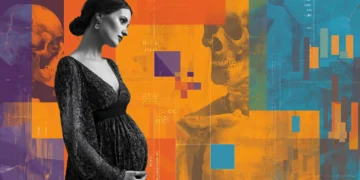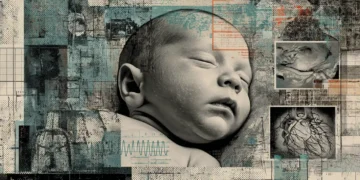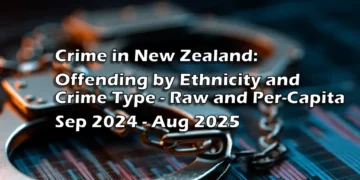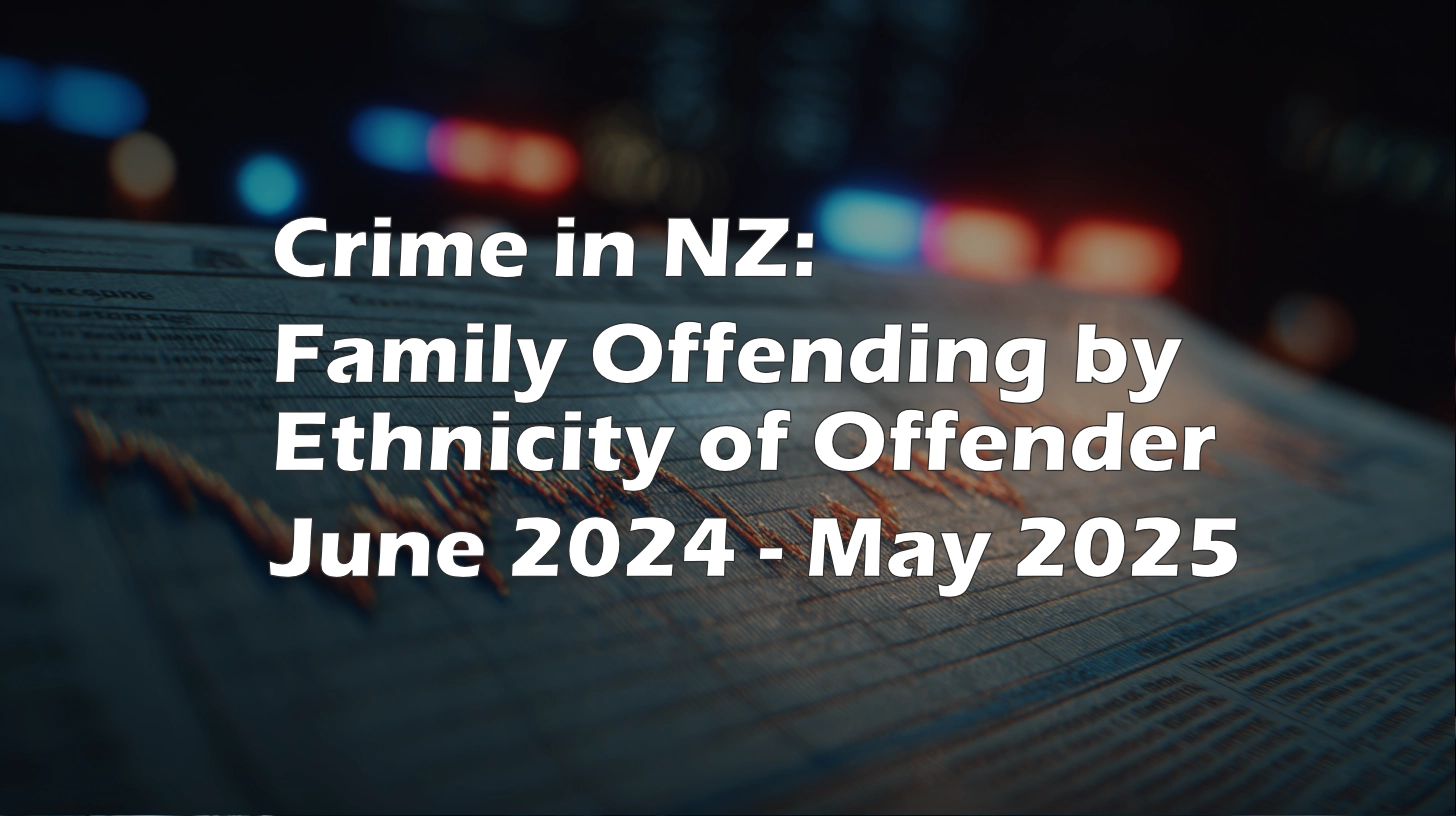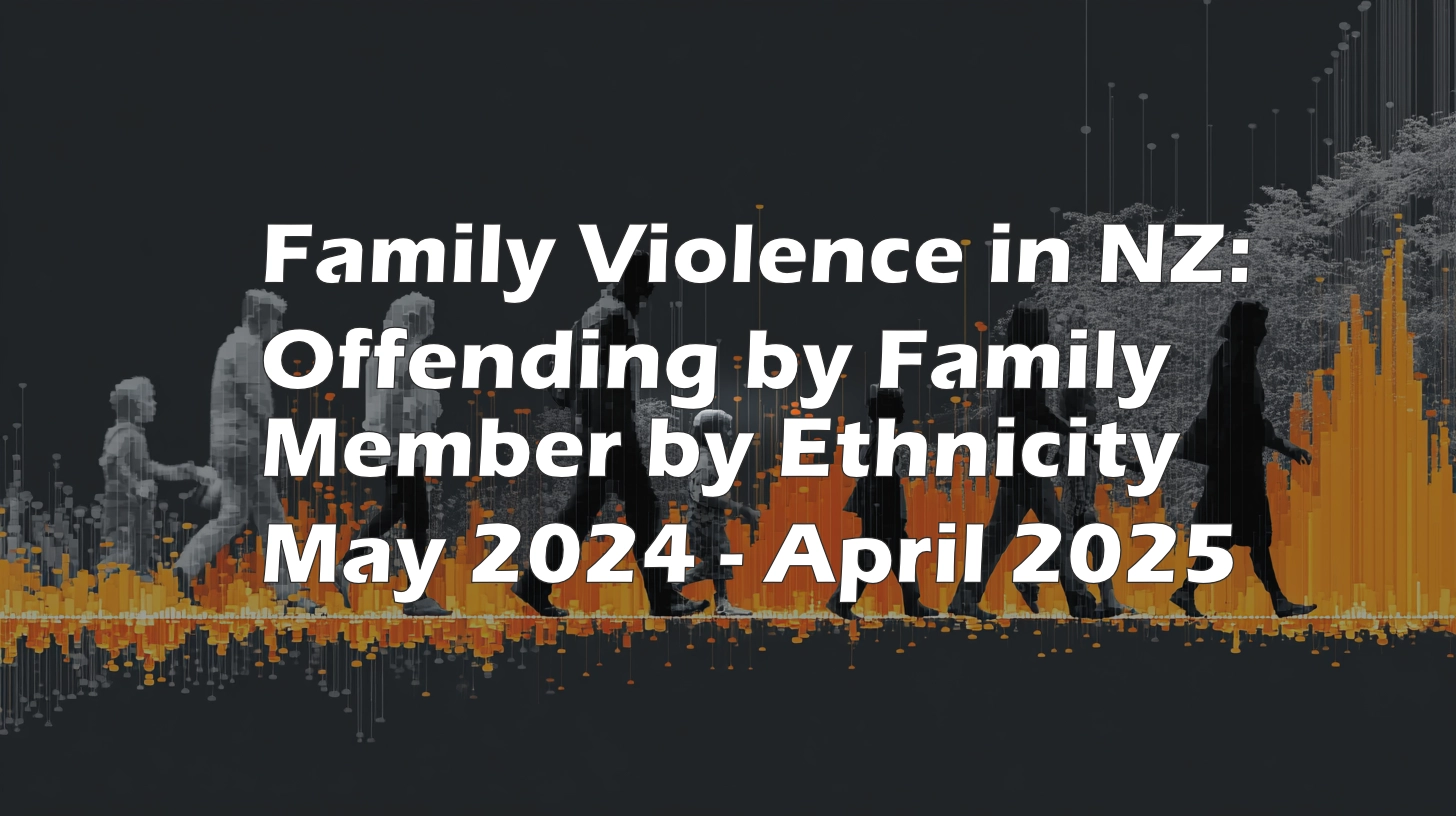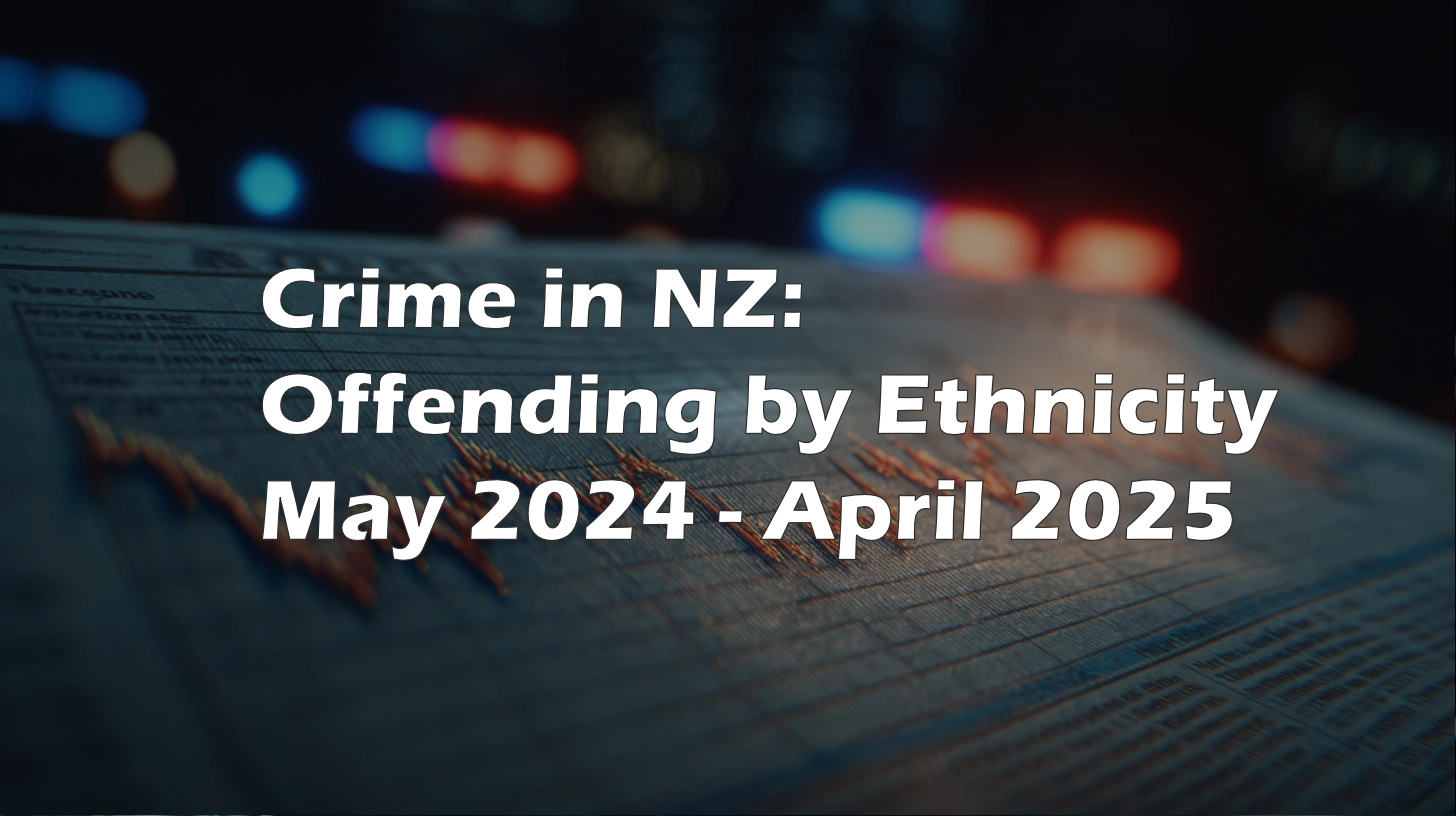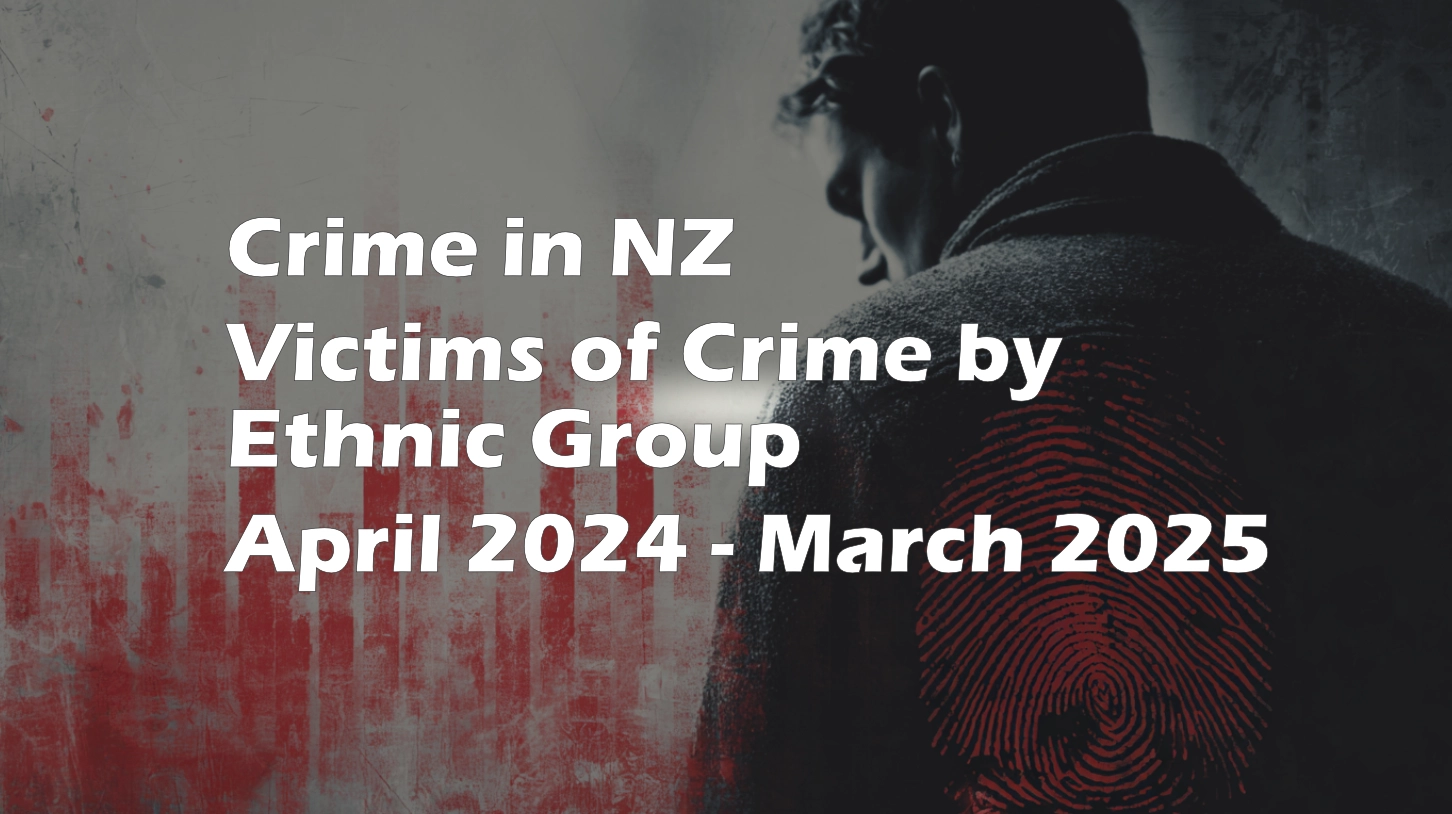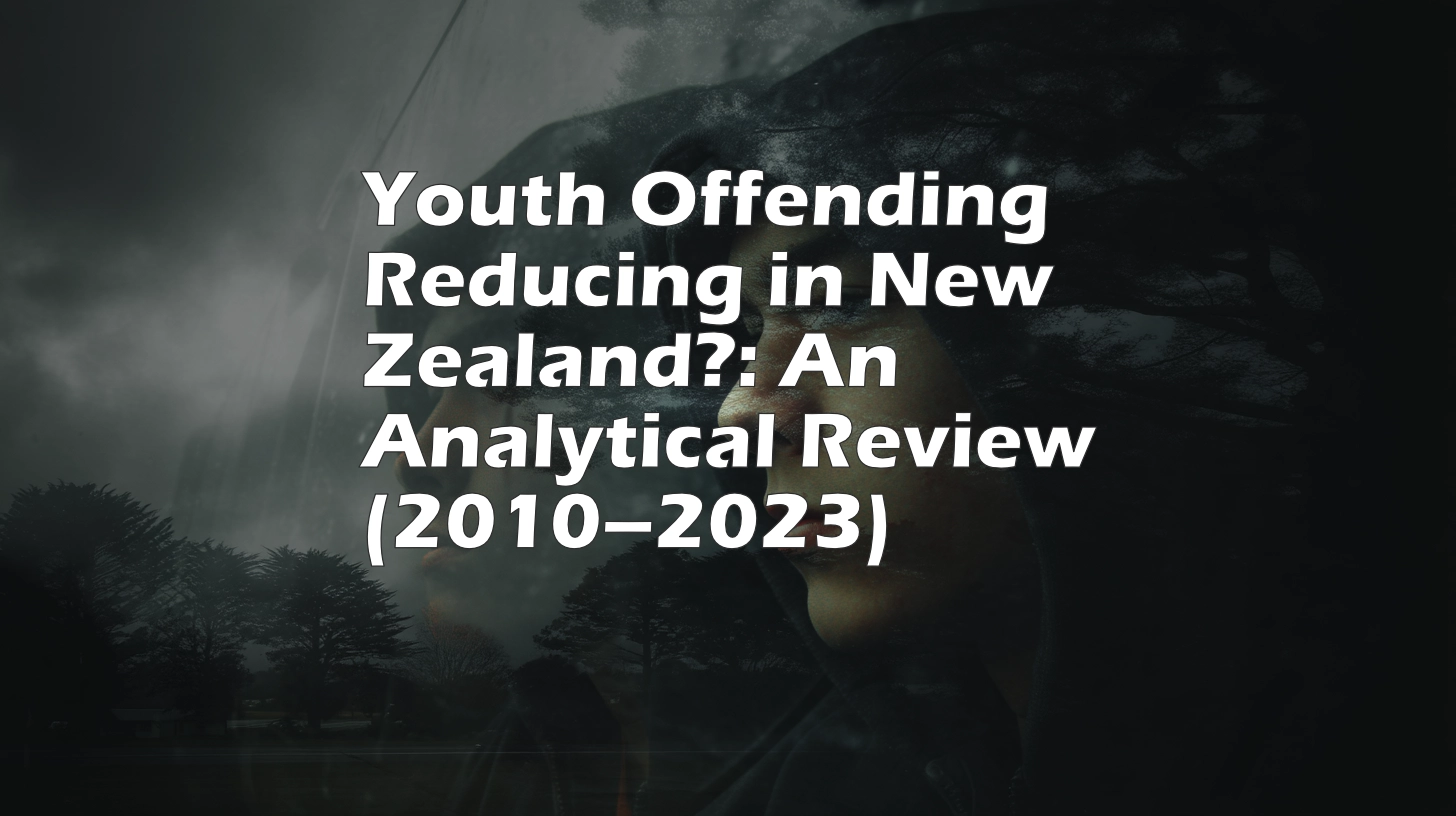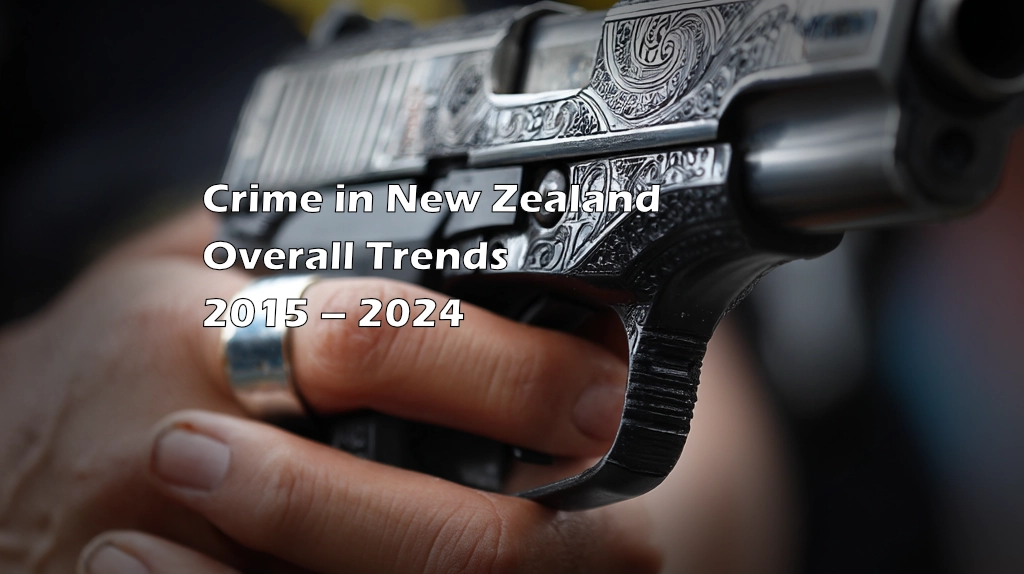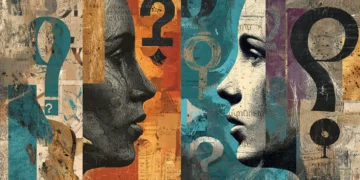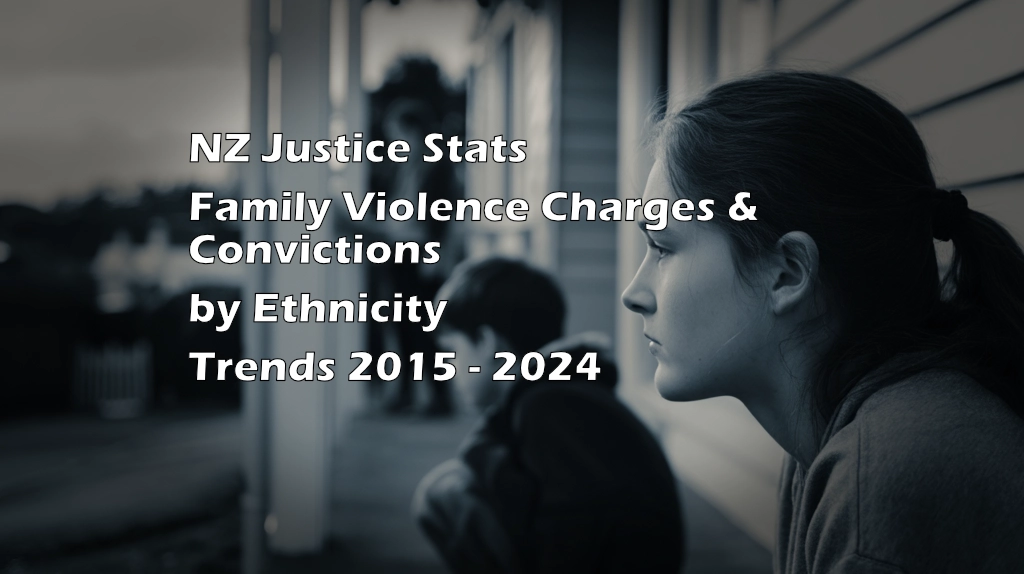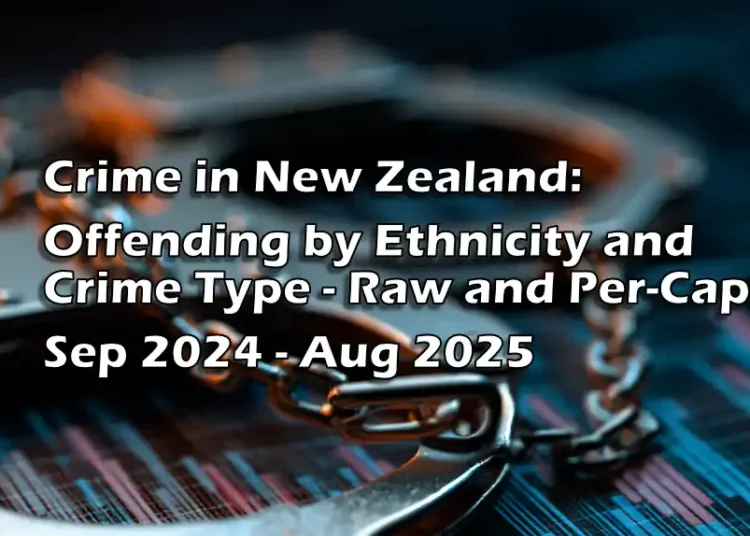Māori Remain Starkly Overrepresented in New Zealand Family Violence Offending, Latest Data Shows
Most recent figures released from New Zealand’s justice system starkly illustrate the persistent and growing ethnic imbalance in the prosecution and conviction of family violence offences. Māori—who make up less than a fifth of the country’s population—account for over half of all charges and convictions in this area, according to Ministry of Justice data spanning the past decade.
The Ethnic Breakdown: Family Violence Charges and Convictions
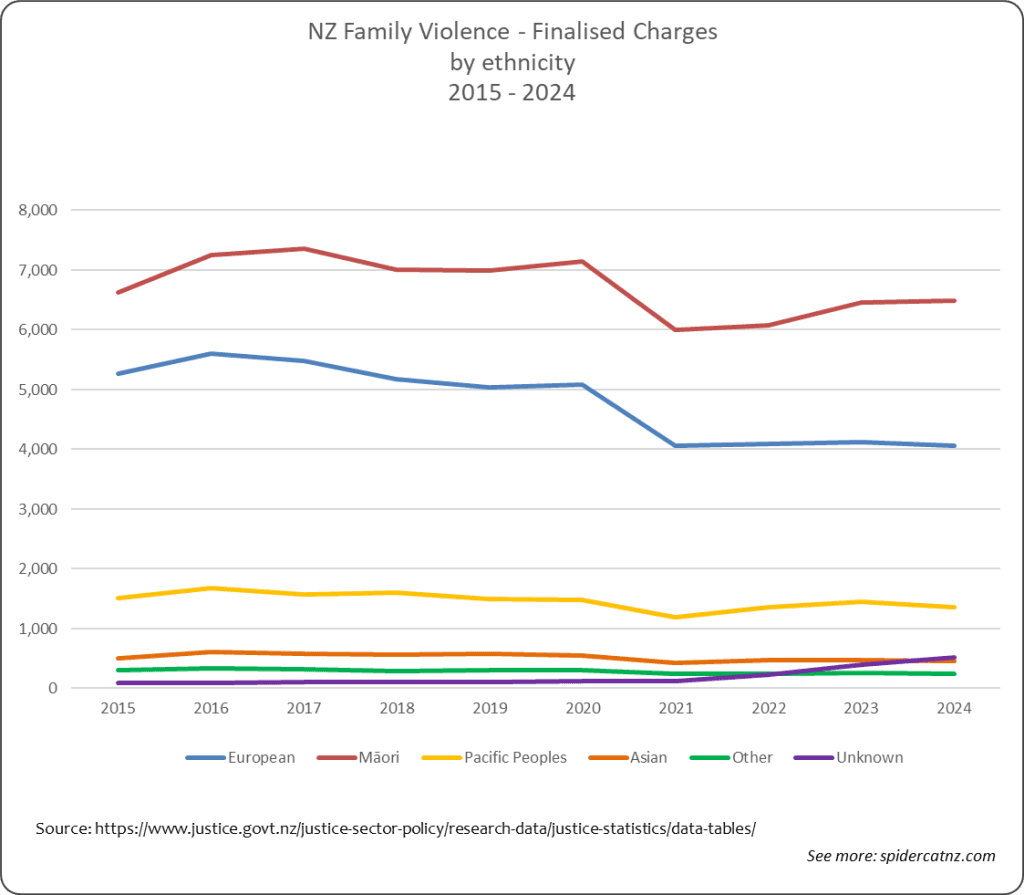
Charges (2024)
- Total people with family violence charges: 12,327
- Māori: 6,491 (53%)
- European: 4,054 (33%)
- Pacific Peoples: 1,352 (11%)
- Asian: 452 (4%)
- Other/Unknown: ~755 (6%)

Convictions (2024)
- Total people convicted: 8,637
- Māori: 4,915 (57%)
- European: 2,853 (33%)
- Pacific Peoples: 924 (11%)
- Asian: 219 (3%)
- Other/Unknown: ~726 (8%)
The Population Context: 2023 Census
According to the 2023 New Zealand Census (multiple responses possible):
- European: 3,241,328 (65.5% of NZ residents)
- Māori: 885,870 (17.9%)
- Pacific Peoples: 458,664 (9.3%)
- Asian: 847,170 (17.1%)
- Other ethnicities: smaller proportions, variable
Overrepresentation Laid Bare
Comparisons are sobering:
- Māori (17.9% of population) are 53–57% of family violence accused and convicted
- Europeans (65.5% of population) are only 33% of charges/convictions
- Pacific Peoples (9.3% of population) are at 11%—slightly above expectation
- Asians (17.1% of population) are severely underrepresented at just 3–4%
This means a Māori person is roughly 3 times more likely than their proportion of the population to appear in family violence court statistics, while a European is half as likely, and an Asian person’s involvement is a fraction of their population share.
Trends Over Time: Māori Share Rising, European Waning
- The overall number of both cases and convictions has fallen since 2015, but the Māori proportion has ticked upward.
- In 2015, Māori were already 50% of charges and 54% of convictions; by 2024, these figures are 53% and 57%, respectively.
- Europeans have seen their share of both charges and convictions drop from 40% to just 33%.
- Pacific Peoples and Asians have remained largely steady, with minor increases or decreases.
Gender and Age Layers
- Males account for the vast majority of those accused and convicted (88% of charges, 90% of convictions in 2024).
- Young adults (20–29) still form a significant group among those facing court for family violence, though average ages are stabilising and rising slightly over time.
- The picture for women is stable but consistently low, at just 12–13% of those going through the family violence justice pipeline.
Conclusion
The Ministry of Justice’s family violence statistics, viewed against the 2023 Census, lay bare the enduring and growing overrepresentation of Māori in family violence cases—despite decades of policy attention and reform.
Sources:
- Ministry of Justice Family Violence Offence Statistics, 2015–2024
- Stats NZ, 2023 Census: Ethnic Group Summaries
(Further data or graphics available on request.)




